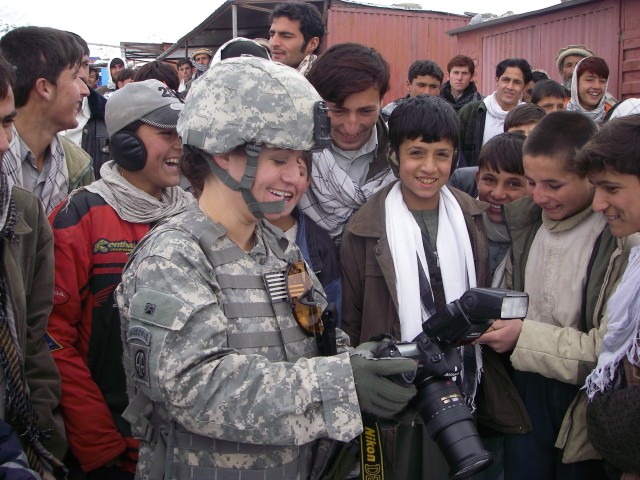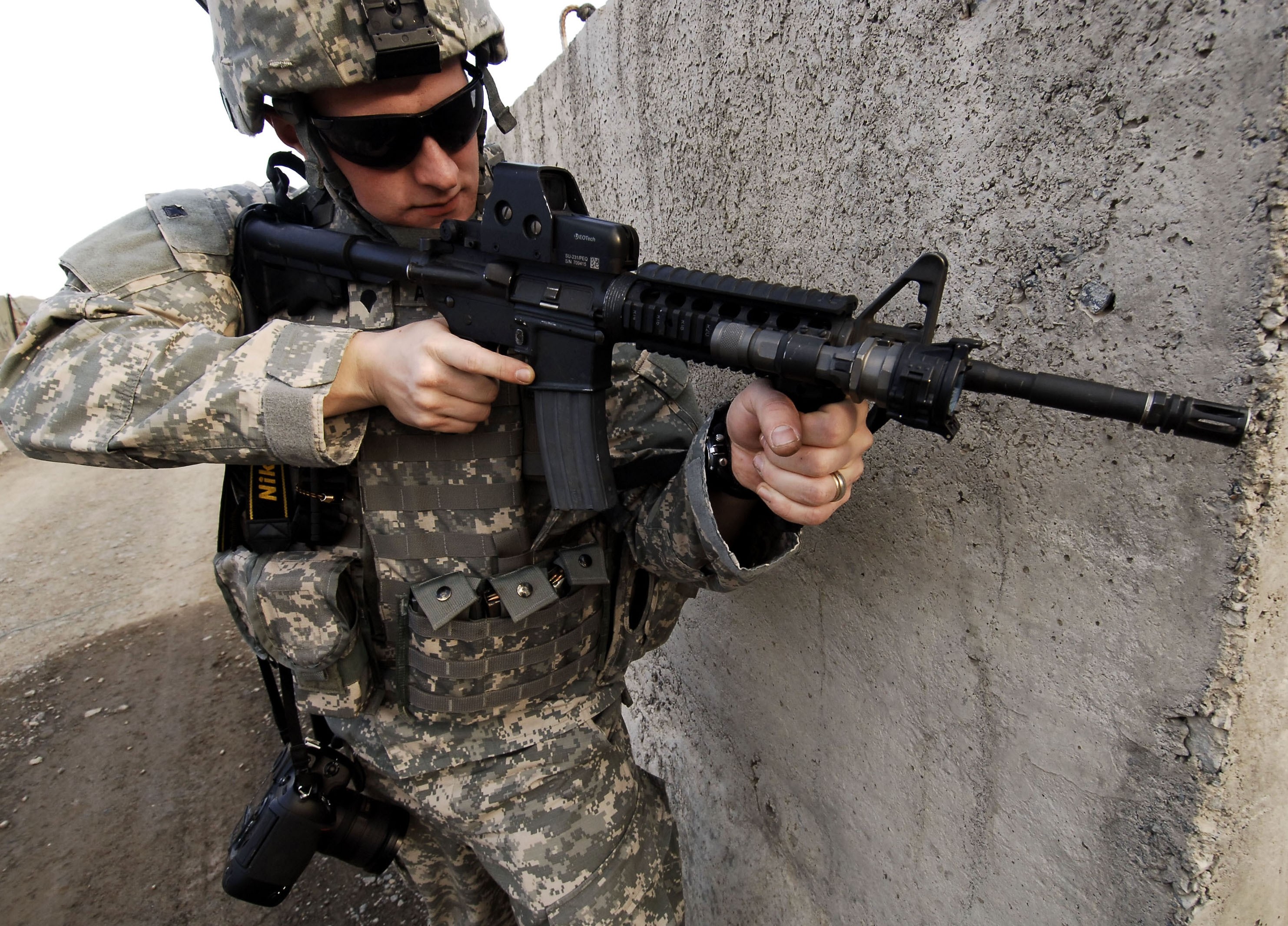If you have ever seen video and still photos of America's Army in action while watching the nightly news, or while watching one of the many documentaries containing archive combat footage on television today, then you most likely have seen some of the extraordinary video and photos taken by one of the United States Army's unseen front-line warriors, the combat camera Soldier.
Under the operational control of the Network Enterprise Technology Command/9th Signal Command (Army) - commonly called the Army Signal Command - the 55th Signal Company (Combat Camera) is the only active duty Combat Camera company in the Army.
The photo documentation mission of the 55th stretches back more than 125 years. Since the 1880s, the Signal Corps has been taking photos for the Army. Then, in 1917, the Army Signal Corps established a Photographic Section responsible for both ground and aerial photography.
Today, the mission of the 55th is to provide tactical visual information support for operational and contingency missions in support of the Department of the Army, the Joint Chiefs of Staff, the Office of the Secretary of Defense, and Army and Unified Commands.
"In short, the mission of the 55th is to provide directed imagery that supports the decision making from the strategic level through the Combatant Commanders down to the tactical level," said Maj. Donald W. Reeves, 55th Signal Company commander. "The 55th also has the mission to document all types of operations and events for historical preservation of the actions.
"The 55th is the only active duty Combat Camera unit in the U.S. Army, making it one of the lowest density and most unique units in the Army," Reeves said. "As the company continues to grow, it is transforming and integrating High Definition equipment which will increase and enhance the unit's abilities."
Not only does the company have a unique mission, it also has a dangerous mission. Since 2003, the unit has had five of its members awarded the Purple Heart, and more than 30 Soldiers received the Bronze Star.
"Our cameramen are deploying on missions everyday out of forward operating bases and combat outposts that put them in harm's way," said Reeves. "Most of our cameramen currently deployed in OIF and OEF have earned a Combat Action Badge in their first month for being closest to the action."
Although the company only has about 180 Soldiers assigned, it isn't hard to find one who has been in the thick of the fight.
"There have been times when I found myself in very hot situations and had to ensure that I maintained situational awareness and contributed to the fight," said Sgt. Johnny Aragon, team leader. "The most recent was when the platoon that I was with got in a fire fight and we were soon surrounded. We had to fight our way through to higher ground, so that we could secure our objective. We completed our mission taking out two Taliban leaders while we suffered no casualties."
Aragon, who has been in Southwest Asia 23 months out of the four years he has been with the 55th, said joining a new unit as a combat cameraman isn't always easy.
"Embedding into a new unit that has never worked with Combat Camera before can be difficult sometimes because I have very little time to prove myself. However, once they see that I am an asset on the battlefield as well as a documenter, I become one of their own."
Another combat camera Soldier, Sgt. Billy Brothers said every combat cameraman is a Soldier first.
"Our job can be just as dangerous as the Soldiers on patrol because we are out their with them, we feel the heat in Iraq with them, we feel the cold in Afghanistan with them, we are with them when they go out, and we are with them when they head back to the forward operating base."
The one thing about Combat Camera is their job is only half finished when the patrol is over.
"When you are done with the mission, unlike a lot of other Solders out there, you still have a lot of digital work to do," said Brothers, who has been a combat cameraman since November 2005. "Sometimes when you do a lot of missions, you rarely have free time to just relax and chill out. You get back from a mission and then you almost spend that same amount of time in front of your laptop, it can get stressful mentally."
Not only do 55th Soldiers support combat operations, they also support humanitarian missions.
"The 55th Signal Company stands ready to deploy to provide Combat Camera support for any other disaster world-wide, to include earthquakes, fires, floods, and hurricanes, such as Katrina and Rita," said Master Sgt. Samantha Shirley, 55th Signal Company first sergeant. "The last humanitarian mission we supported was in Bolivia in March 2007 after heavy rains caused major flooding throughout the country. We sent a two-person team to document the disaster and the subsequent relief efforts."
Shirley believes training is a big part of being a combat cameraman.
"Combat Camera Soldiers face a multitude of situations based on the wide-range of missions that we support. Our Soldiers have to be ready to react to any situation in any environment; therefore, our training requirements are very broad.
"Our Soldiers are continuously enhancing and refining their documentary abilities while keeping up with technological advancements," Shirley said. "Not only do our Soldiers attend advanced technical training at the Defense Information School and Syracuse University, they are also trained on how to use a multitude of weapons including the M16, M4, M9, M240B, M203 and MK 19."
It takes an extremely dedicated and intelligent Soldier to be a Combat Cameraman, Reeves said.
"Many of our cameramen and women already possess Bachelor's degrees and many are working toward Master's degrees in their field.
"A combat cameraman has to have the maturity to be able to not only work independently of others with minimal supervision but also has to have the maturity to interact in most cases with senior military officers and coalition partners."
America's Army will continue to have boots on the ground wherever they are needed, from combat operations in Iraq and Afghanistan, to humanitarian and missions at home and abroad.
And as long as there is a need to take photos or video to help meet mission objectives, or for preserving historical actions and acts, then Army's combat cameramen will be the Army Strong Soldiers, with their boots on the ground, who meet that need.




Social Sharing